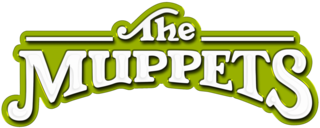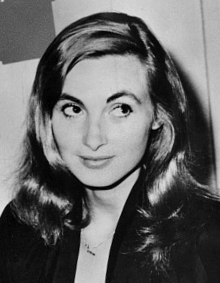Related Research Articles

James Maury Henson was an American puppeteer, animator, actor, and filmmaker who achieved worldwide notability as the creator of the Muppets. Henson was also well known for creating Fraggle Rock (1983–1987) and as the director of The Dark Crystal (1982) and Labyrinth (1986).

The Muppets are an American ensemble cast of puppet characters known for an absurdist, slapstick, burlesque, and self-referential style of variety-sketch comedy. Created by Jim Henson in 1955, they have become a media franchise encompassing films, television, music, and other media associated with the characters. Owned by the Jim Henson Company for nearly five decades, the characters of the Muppets franchise were acquired by the Walt Disney Company in 2004.

George Orson Welles was an American director, actor, writer, and producer who is remembered for his innovative work in film, radio, and theatre. He is considered to be among the greatest and most influential filmmakers of all time.

The Muppet Show is a variety sketch comedy television series created by Jim Henson and starring the Muppets. It is presented as a variety show, featuring recurring sketches and musical numbers interspersed with ongoing plot-lines with running gags taking place backstage and in other areas of the venue.

Frank Oz is an American puppeteer, filmmaker, and actor. He is best known for his involvement with Jim Henson and George Lucas through The Muppets, Sesame Street, and Star Wars, as well as his directorial work in feature films and theater.

The Muppet Movie is a 1979 musical road comedy film directed by James Frawley and produced by Jim Henson, and the first theatrical film to feature the Muppets. A co-production between the United Kingdom and the United States, the film was written by The Muppet Show writers Jerry Juhl and Jack Burns. Produced during the third season of The Muppet Show, the film tells the origin story of the Muppets, as Kermit the Frog embarks on a cross-country trip to Los Angeles, encountering several of the Muppets—who all share the same ambition of finding success in professional show business—along the way while being pursued by Doc Hopper, a greedy restaurateur with intentions of employing Kermit as a spokesperson for his frog legs business.
Oja Kodar is a Croatian actress, screenwriter and director known as Orson Welles's romantic partner and mistress during the later years of his life.

The Other Side of the Wind is a satirical drama film co-written, co-edited, and directed by Orson Welles, and posthumously released in 2018 after 48 years in development. The film stars John Huston, Bob Random, Peter Bogdanovich, Susan Strasberg, and Oja Kodar.

Stanley Sheff is an American Hollywood-born director and screenwriter. He has worked in television, stage and screen. His collaboration with Orson Welles eventually led Sheff to direct and co-write the cult sci-fi feature Lobster Man from Mars (1989) starring Tony Curtis, based on a title suggested by Welles. Feature films and television are not the only types of projects directed by Stanley Sheff. In the early 1980s, he produced, directed, and performed a popular comedy radio show for KROQ-FM radio in Los Angeles called "The Young Marquis and Stanley", a comedy show that was aired on Sunday evenings. He has appeared as Master of Ceremonies on stage and at live vintage dance events as his character Maxwell DeMille.

Filming Othello is a 1978 English-language West German documentary film directed by and starring Orson Welles about the making of his award-winning 1951 production Othello. The film, which was produced for West German television, was the last completed feature film directed by Welles, as well as the last one to be made during his lifetime.

The Fountain of Youth is a 1956 television pilot directed by Orson Welles for a proposed Desilu Productions anthology series that was never produced. Based on a short story by John Collier, the short film narrated onscreen by Welles stars Dan Tobin, Joi Lansing and Rick Jason. The Fountain of Youth was televised once, on September 16, 1958, on NBC's Colgate Theatre. It received the prestigious Peabody Award for 1958, the only unsold television pilot ever to be so honored.
The Muppet Show: Sex and Violence is the second of two pilots for The Muppet Show, airing on ABC on March 19, 1975. The other pilot, The Muppets Valentine Show, aired in 1974.
The Muppets: A Celebration of 30 Years is a one-hour special starring Jim Henson's Muppets. It was shot in Toronto, Ontario in 1985 and aired January 21, 1986 on CBS.
Filming 'The Trial' is an unfinished making-of film by Orson Welles, made in 1981, which focuses on the production of his 1962 film The Trial.
Nella terra di Don Chisciotte is an Italian-language documentary travelogue series about Spain, made by Orson Welles. It began filming in 1961, but did not air until 1964. The series follows Welles' travels around Spain, and was narrated by Arnoldo Foà. The series was made for Radiotelevisione Italiana (RAI-TV). Co-starring with Welles were his Italian wife Paola Mori, and their young daughter Beatrice Welles.

The Land of Gorch was a recurring adult puppetry skit that appeared in the first season of the American comedy television program Saturday Night Live, featuring Jim Henson's Muppets. His characters appeared regularly on the late-night comedy television program. After Sesame Street, Henson feared he would become typecast into working on children's television series. His talent agent Bernie Brillstein, who represented Gilda Radner, Dan Aykroyd, John Belushi, and Lorne Michaels helped him transition to Saturday Night Live.

Paola di Gerfalco, Contessa di Gerfalco, better known by her professional name Paola Mori, was an Italian actress and aristocrat, and the third and last wife of Orson Welles.
The Muppets Go to the Movies is a one-hour television special starring Jim Henson's Muppets. It first aired May 20, 1981 on ABC as promotion for The Great Muppet Caper, which was released in the United States a month later.
Beatrice Giuditta Welles is an American former child actress, known for her roles in the film Chimes at Midnight (1966) and the documentary travelogue In the Land of Don Quixote (1964). The daughter of American filmmaker Orson Welles and Italian actress Paola Mori, she is a former model, radio and TV personality, founder of a cosmetics line and designer of handbags and jewelry.
References
- ↑ Joseph McBride, Whatever Happened to Orson Welles? (Kentucky University Press, 2006) p.256
- 1 2 "'Orson Welles Show' pilot may see commercial release". Wellesnet | Orson Welles Web Resource. 2020-01-06. Retrieved 2020-02-03.
- ↑ Joseph McBride, Whatever Happened to Orson Welles? (Kentucky University Press, 2006) p.257
- ↑ wellesnet (2023-03-07). "Orson Welles TV projects being offered to labels, streamers". Wellesnet | Orson Welles Web Resource. Retrieved 2023-06-20.